Beacon Villages
cosdon.co.uk south-tawton.co.uk south-zeal.co.uk cosdon-beacon.co.uk
Belstone South Tawton South Zeal Sticklepath
Under Cosdon Beacon Dartmoor Devon UK

| |
|
|
|
|
News Story
Bees and wasps fall into the Hymenoptera group which are stinging insects.
|
||
Replacing the Queen |
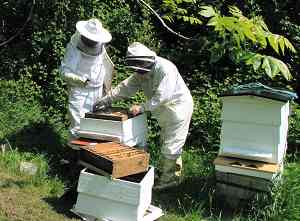 |
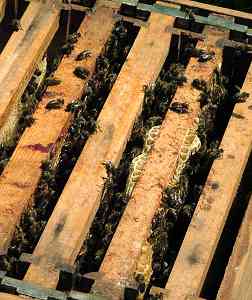 |
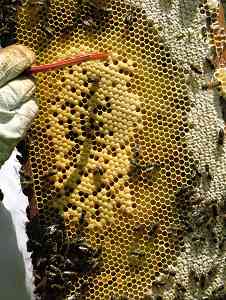 |
Of course, I didn't know it at the time, I thought that they were just bees. There was something at the back of my mind that was asking the question 'why are they dressed up like that and you are just in jeans and T-shirt?' |
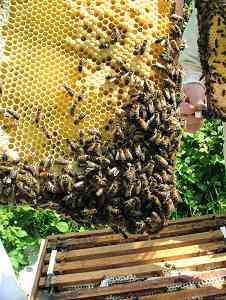 |
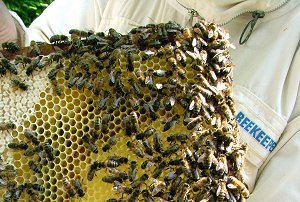 |
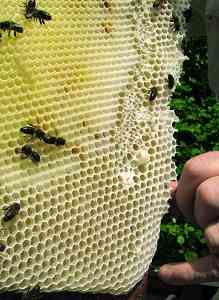 |
I am told that David has a theory that bees can recognise shapes and this helps them find their way home when they have a bit too much nectar some nights. To this end, he has marked various coloured shapes on the front doorstep of each hive. Looking up, I decided that Roy was taking this theory a bit far by writing 'BEEKEEPER' on his spacesuit. He pointed out to me the large circular bump on the cone which, he said, the bees had built to accommodate a new queen. He then smashed it! |
| Whether it was at this point that the word got out to the surrounding bee population or not, I don't suppose I'll ever know. While they worked, Roy explained that they were busy replacing the queen, which involved 'removing' the old queen and her followers and developing a new colony in its place. I gathered that this, unfortunately involved the demise of rather a lot of the little darlings so I quietly melted away, to take a few shots of a hive which had no 'welcome home' shape on its doorstep. | 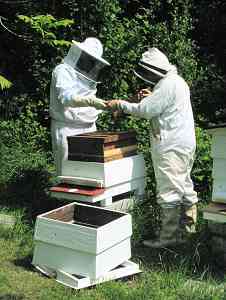 |
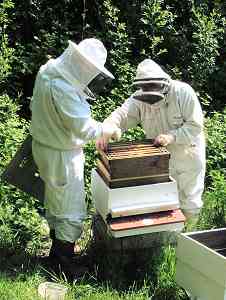 |
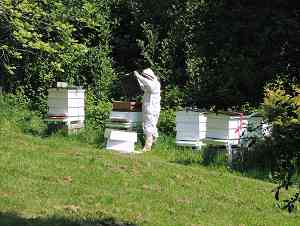 |
As you can see, I have no more close ups after this. I had knelt down several metres away from this older hive and was about to snap the inhabitants, as they went in and out, when I got the first of my three stings. Roy told me later that the bees in that hive were 'aggressive' and that I 'should wear a suit next time'. Strangely, the stings didn't hurt as much as I expected and, with the application of some anti-histamine cream , were gone by the next morning. There may be a 'next time, after all! |
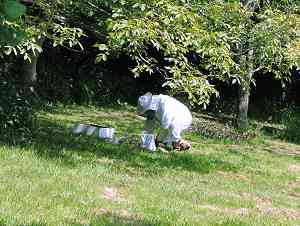 |
|
||